The Burrow

The transition to renewable energy is a vital component in the fight against climate change. As awareness about the climate crisis has increased, so too has demand and enthusiasm for zero-emissions and renewable energy sources.
Unfortunately, it is not as easy as just flicking the switch from fossil fuel power over to renewable energy, and there are various logistical, technological, political and social issues that have to be overcome before renewables can completely (or mostly) power our lives. Not only that, but the overall cost of a full transition to renewables is expected to be large1.

With that in mind, the energy experts at Compare the Market Australia wanted to find out who is the most excited and willing to transition to renewable energy, and who is a full-on fossil fuel fan!
To do this, we asked more than 3,000 Australian, Canadian and American adults a few questions about renewable energy, nuclear energy and energy prices.
Here’s what we found out:

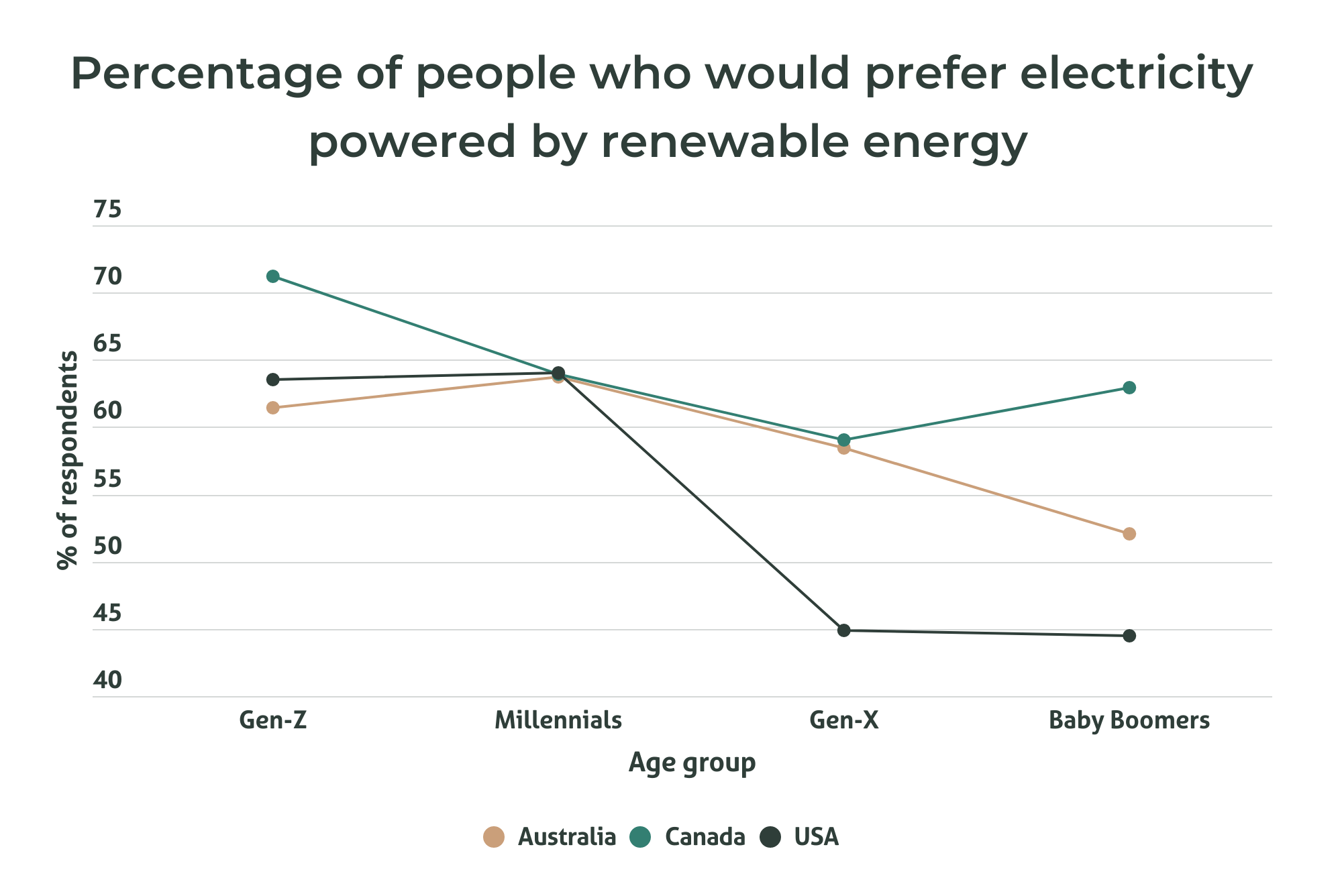
Younger people in all three nations were generally more likely to prefer renewables. Interestingly, in Australia and the United States, Millennials were the generation most likely to prefer renewable energy and Baby Boomers were the least likely; meanwhile in Canada, Generation Z was the most likely, and Generation X the least.

It turns out that 58.4% of Aussies would rather rely on electricity powered by renewable energy, while only 27.3% had no preference. More than 14% of Aussies said they would prefer electricity powered by fossil fuels.
The youngest of the pack – Generation Z – was the least likely group to have a preference one way or the other (31.5% no preference). Meanwhile, Millennials were the most likely to prefer renewables (63.7%), and Baby Boomers were the most likely to prefer fossil fuels (21.0%).
Despite this, only 46.1% of Australians would be happy to pay more to rely on green energy rather than fossil fuels. Unsurprisingly, this trend was a function of age, however the relationship was not linear. Just under 60% of Gen Z and Millennial respondents said they would happily pay more, while Boomers and Generation X were both around 35%.
Of the people who would be willing to pay extra, over half said they would continue to pay for green energy even if it became more expensive or if cost of living increased.
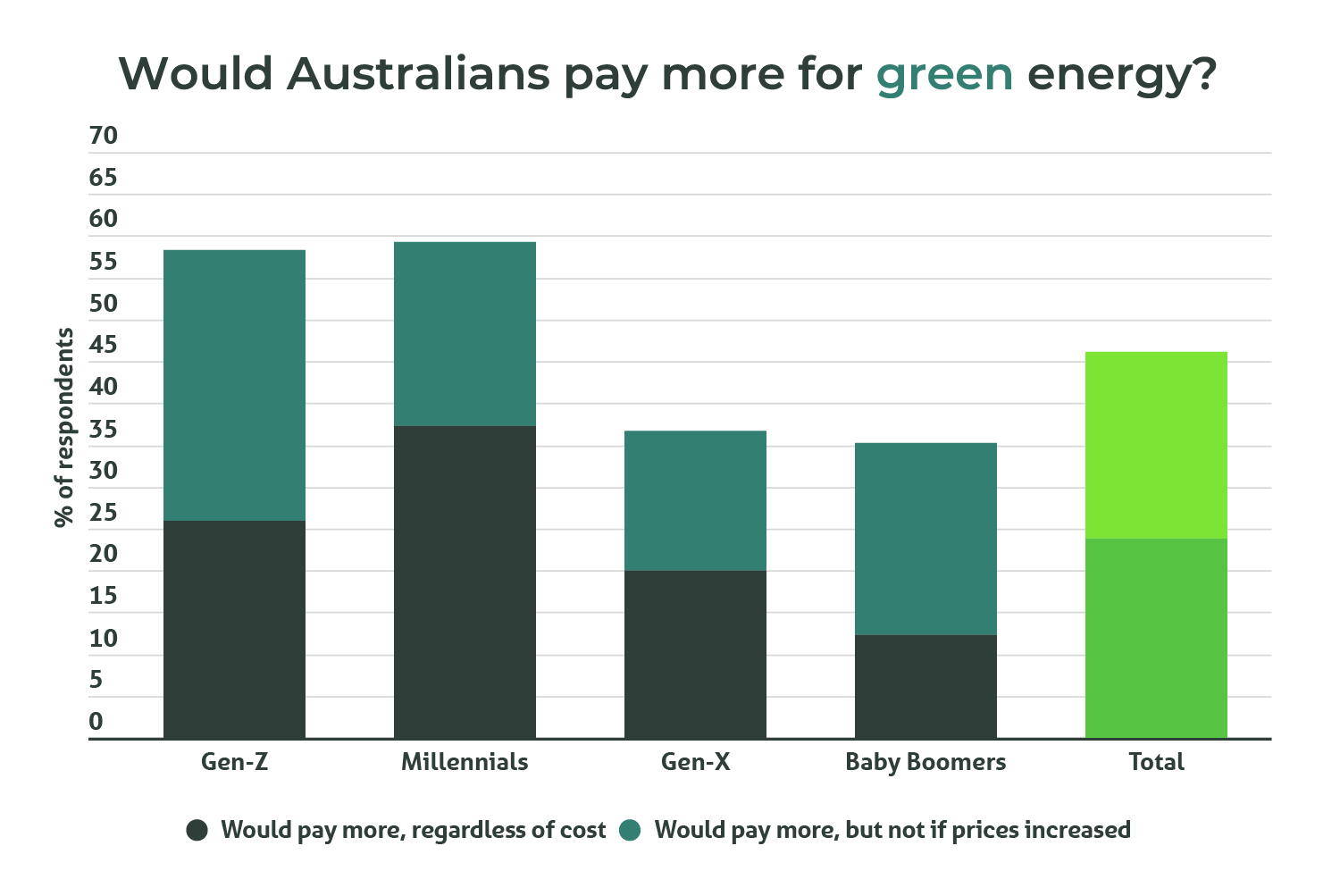
We also asked Aussies what they thought of nuclear energy – whether they thought it was “green,” and if they considered it safe enough to use.
Overall, more than one third of Australians (35.1%) said they consider nuclear energy “green, clean and safe to use.” 18.4% of people agreed that nuclear energy was green, but believed “it was too dangerous to use.”
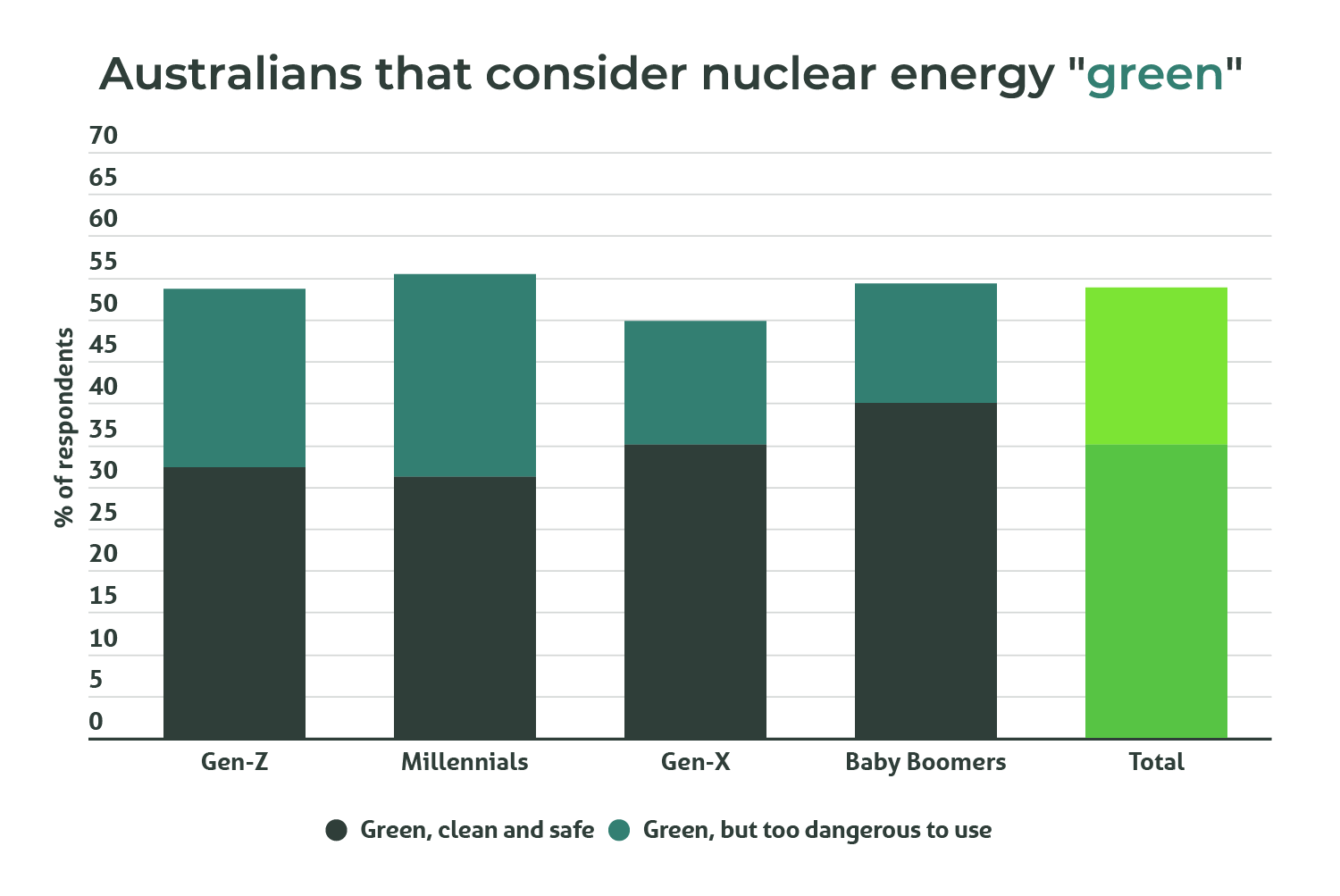
This means that 53.5% of Australian respondents said they consider nuclear energy to be “green.” This total was similar across all age groups, however, Boomers were more likely to consider nuclear energy safe while younger generations were more likely to consider it dangerous.
More than 60% of Canadians said they would prefer electricity powered by renewable energy, while 26.7% said they had no preference. A slim 10.1% said they would prefer fossil fuel powered electricity.
Canadian Gen Zers were the least likely to have no preference – at only 20.8% compared to 27-28% in other age groups – and were also the most likely to favour renewable energy, at 71.2% compared to about 59-64% in other age groups.
Canadians seem to be split down the middle on whether they would be willing to actually pay more for electricity powered by renewables, at only 50.9% of Canadian respondents.
Of these people, more than 60% would continue to pay more even if the cost increased further or cost of living increased.
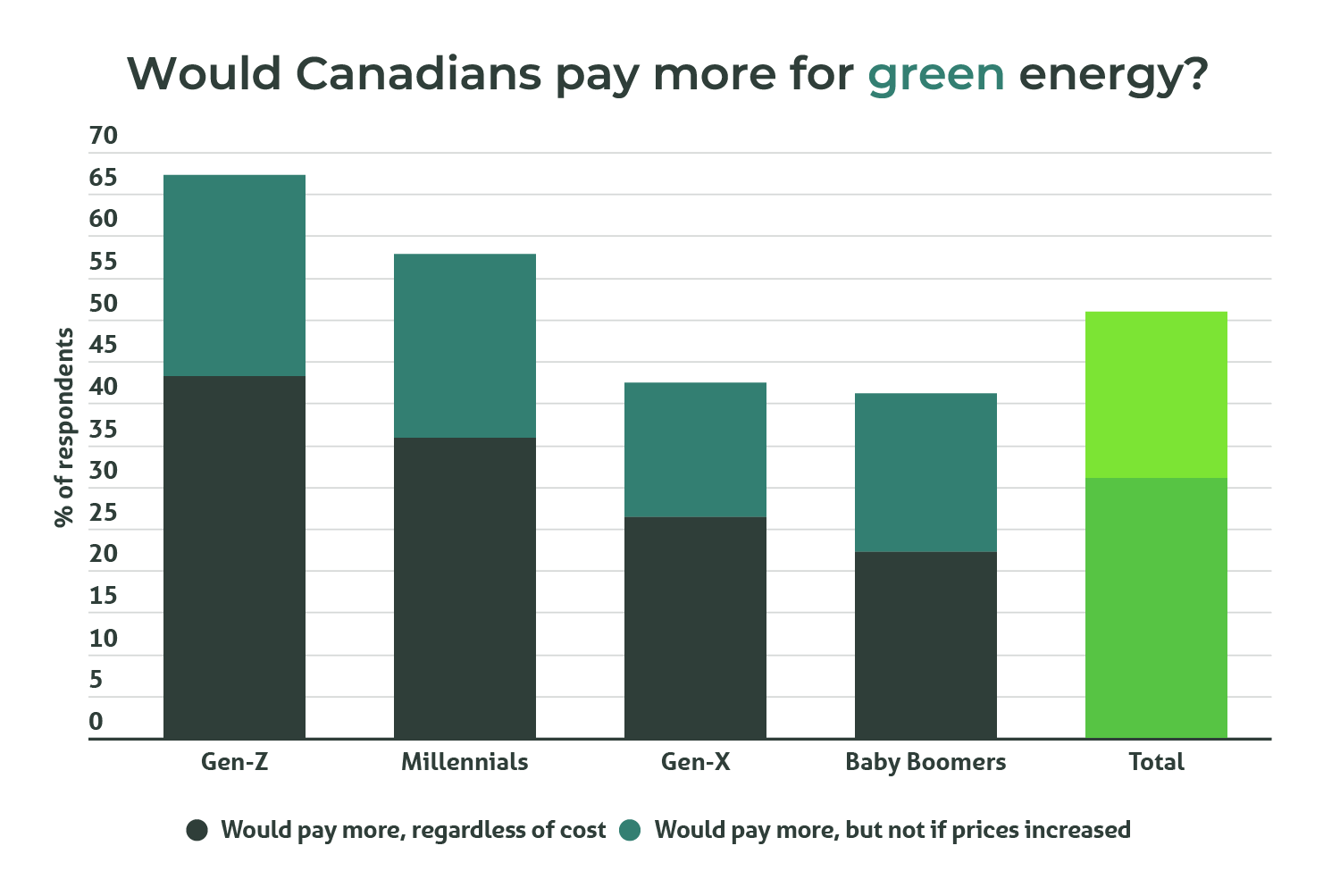
We also asked Canadians what they thought of nuclear energy – whether they thought it was “green,” and if they considered it safe enough to use.
Approximately one third (32.3%) of Canadians consider nuclear energy green, clean and safe to use, while 21.5% said it was green but too dangerous to utilise. A further 22.4% did not know.
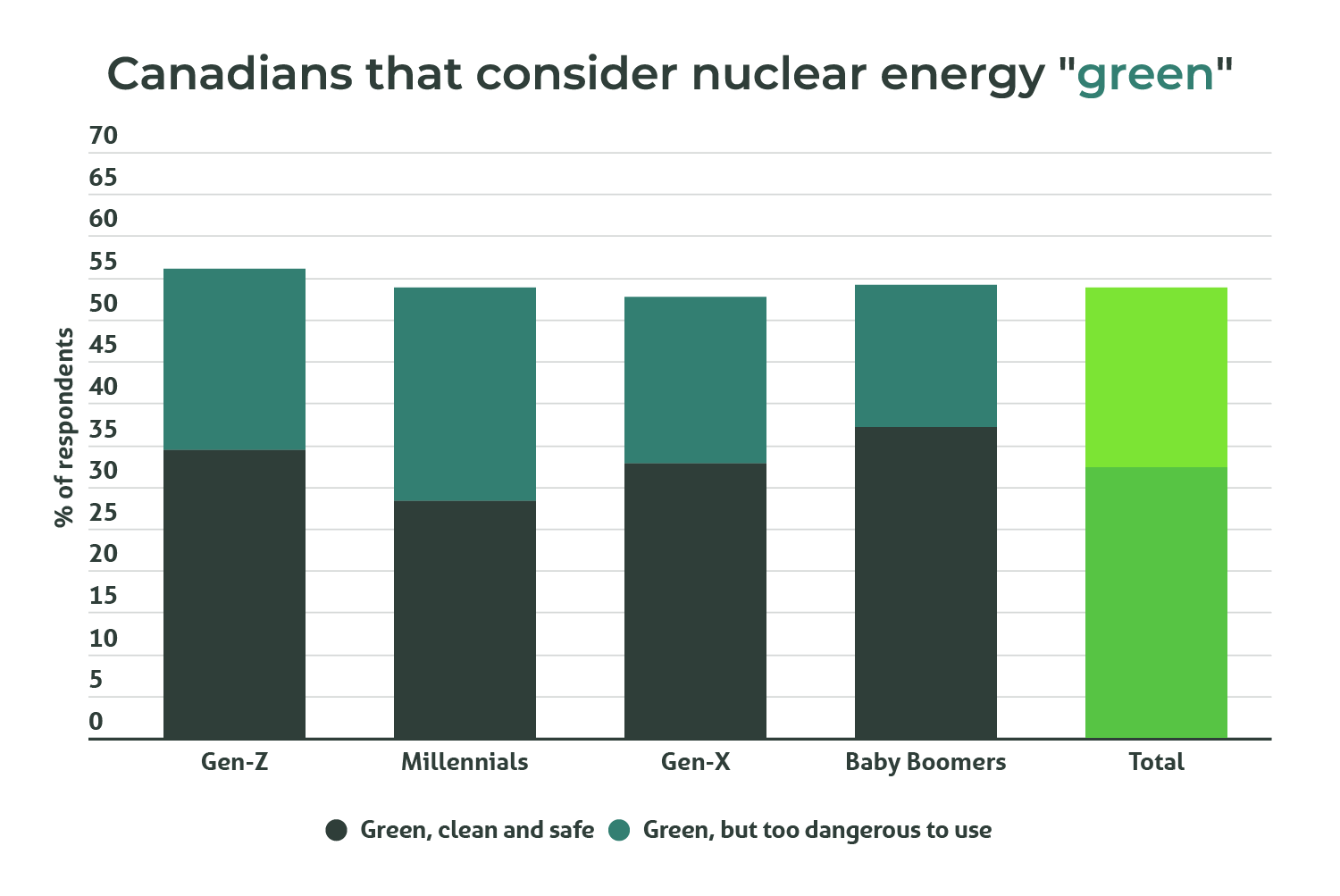
This means that, overall, 53.8% of Canadians consider nuclear energy to be “green.” Millennials were the least likely to consider nuclear energy green and safe. Interestingly, Gen Z was the most likely to consider nuclear energy “green” overall.
The majority of American respondents had a preference towards renewable energy, with 52.6% of people preferring electricity powered by renewables, compared to only 16.4% that preferred fossil fuels. More than 30% of people had no preference.
There is a clear divide on who wants renewable energy – about 64% of both Generation Z and Millennials prefer renewables, compared to around just 45% of Generation X and Baby Boomers. In addition, Millennials were the generation least likely to prefer fossil fuels, at about 11%, compared to 18-19% in other age groups.
However, only 47.1% of Americans said they would be willing to pay more to rely on renewables. Boomers were significantly less likely to say this, with only 28.8% of this demographic in agreement.
Of those who would pay more for renewable energy compared to fossil fuels, 60.1% said they would continue to pay for renewable energy even if it became more expensive or the cost of living increased.
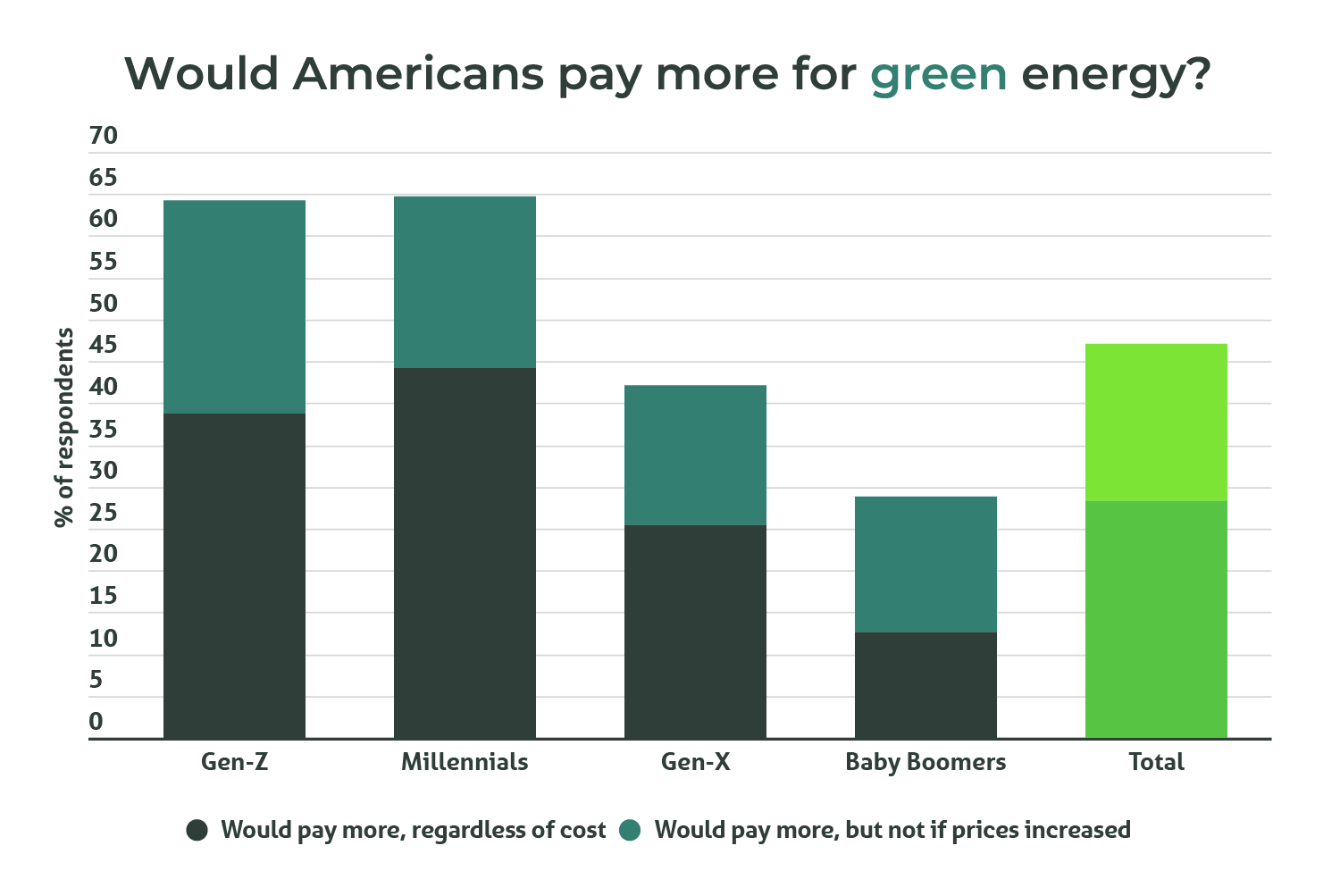
We also asked Americans what they thought of nuclear energy – whether they thought it was “green,” and if they considered it safe enough to use.
One third of American respondents believe nuclear energy is clean, green and safe to use (33.5%), while 17.6% said nuclear energy is green but too dangerous to utilise. Interestingly, Millennials were over 10% more likely than any other generation to believe nuclear energy is green, clean and safe – 42.1% of Millennials said this, compared to 27.7% of Gen Z, 30.1% of Gen X and 31.2% of Boomers.
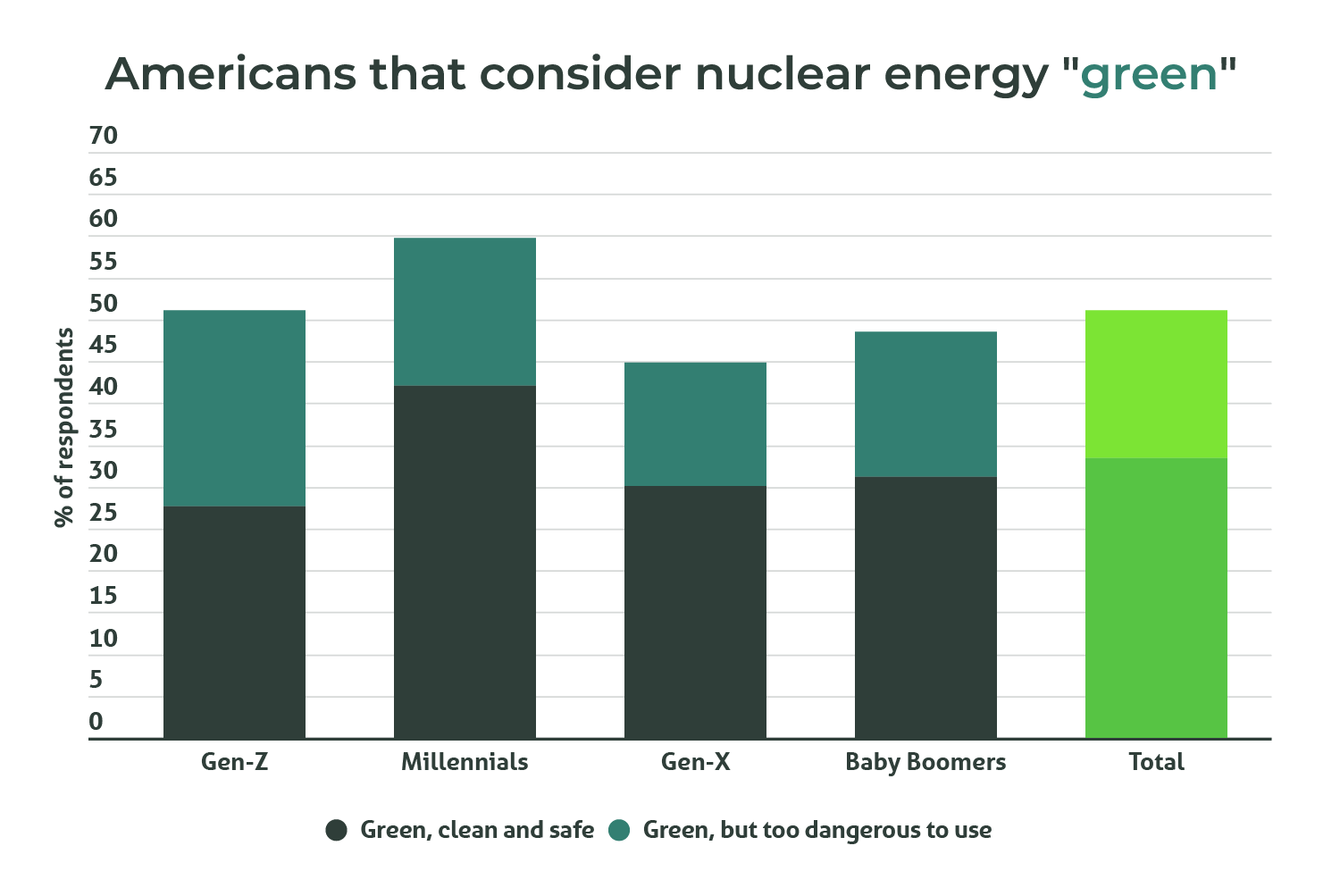
Overall, 51.1% of Americans thought nuclear energy was “green,” regardless of whether they thought it was dangerous.

Head of Energy at Compare the Market Australia, Meredith O’Brien, said that there is clearly a demand for electricity powered by renewable sources.
“Australia’s GreenPower initiative is designed to help Australians choose energy retailers that invest in renewable energy,” Ms O’Brien said.
“Aside from GreenPower, retailers can sometimes also offer their own options for consumers that want to offset emissions or reduce their carbon footprint.
“Some retailers even offer these ‘green’ plans without additional charges, or at rates that can be quite competitive against their traditional counterparts.”
Ms O’Brien also explained that while nuclear power plants produce no carbon dioxide during operation, it is important to take into account the environmental impact of mining and refining fuel for the reactor.
“The processes of extracting, transporting and refining uranium all require large amounts of energy – which may be generated using fossil fuels – not to mention the damage that uranium mining can cause to the local ecosystem.”
If you are looking to change energy plans in Australia, you could consider trying our free online comparison tool to help search for a plan suitable for your individual circumstances.
Compare the Market commissioned PureProfile to survey 1,001 Australian, 1,001 American and 1,000 Canadians adults in November 2023.
